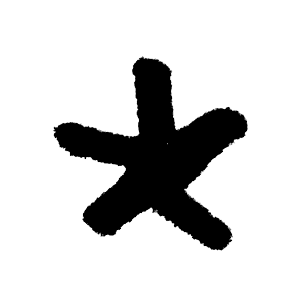If you’re reading this, there’s a good chance that at some point in your life, someone has called you weird. You probably have some weird beliefs, or at least you’ve considered them. You may think of yourself as a weird person — in fact, it may be a point of pride.
You’ve also probably used weird as an insult. Maybe you were describing a subculture you don’t like, an idea that seems too outlandish, or a guy who just seemed off. Weirdness is the criticism of last resort: the term we resort to when we can’t articulate exactly why we don’t like something, except for the bare fact of its abnormality. And as bad-weird, so too good-weird. We all want to be unique (later in this issue, Agnes Callard asks why), but weirdness is a label without content.
In short: “weird” is lazy. In this issue, we’ve put together a set of pieces that aren’t. Each of these essays takes a subject that’s easy to dismiss — something that’s too bizarre, too science fictional, too silly — and asks what it would mean to take it seriously. Let’s start big: Edwin Kite and Robin Wordsworth guide us through the technologies that could make a green Mars a reality, and one day let us fill the solar system with life. Back here on Earth, Lynette Bye asks whether we’ll be able to generate enough energy to power the AIs of the future. And Adam Marblestone thinks it’s possible that those AIs might be capable of automating the process of mathematical research itself.
Michael Skuhersky is interested in another kind of machine intelligence. His ultimate goal is to enable perfect computer simulation of the human brain. In the meantime, scientists have yet to simulate the simplest brains we know of — that of the nematode C. elegans — but new advances mean that this first step is finally within reach.
There’s a lot in this issue about very tiny brains. A small number of effective altruists take seriously the welfare of crustaceans. In more critical circles, shrimp welfare exemplifies EA’s commitment to absurd conclusions. In even more critical circles, the shrimp make people mad. In our non-scientific poll of things people say about EA on twitter (note: we don’t vouch for our methodology and cannot recommend trying to replicate it), “freaks who care about shrimp” is displacing “nerds who care about skynet” as a term of abuse. We can’t even blame them. There’s something intuitively appalling about redirecting resources that could be used to save human lives towards more humane treatment of crustaceans.
Caring about shrimp is weird. But if you fight past the initial twinge of revulsion, the argument for it is difficult to ignore. It didn’t take much — one draft really — for Andrés Jiménez Zorrilla, co-founder of the Shrimp Welfare Project, to convince us that taking shrimp welfare seriously makes ethical and financial sense. So too the philosopher Bob Fischer, who deserves accolades for being the first person to make the two of us empathize with fruit flies.
When a type of mind is very different from ours, it’s hard to treat it with compassion. Insects, at least, are inarguably alive. Today, the idea that artificial intelligences might one day deserve our moral consideration is a joke. Rob Long and Kathleen Finlinson want to change that. We spoke with them about the current state of research into AI consciousness and how to prepare for a future we might share with a species we created.
That said, it’s not like we understand human brains — or consciousness — all that well either. Kati Devaney talks with us about the neuroscience of what she calls the “weird fork” in meditation research, including new studies on what in Pali is called nirodha samapatti: the rare meditative achievement of cessation of consciousness altogether. And Jake Eaton reviews the science on the weird thing his brain does when he hears chewing sounds.
Then there’s weird as in “might have appeared in an issue of Weird Tales — or, in this case, Amazing Stories. Scott Alexander brings back the Shaver mystery, a conspiracy theory about evil dwarves from the lost civilization of Atlantis that fascinated science fiction readers in the 1940s (and whose roots go much further back). Sam Kriss brings us another set of theories about what’s really going on with human reproduction, which —
— Well, we won’t spoil it. You should just read on.



